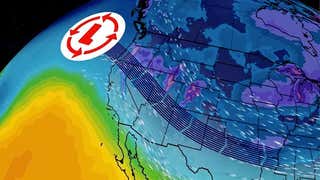

US
°C





Pictured is an oil boom barrier that was intended to stop the spread of oil from the BP Deepwater Horizon oil spill. This image was taken on April 30, 2010.
(MARK RALSTON/AFP/Getty Images)
Scientists recently made a stunning discovery that proves the effects of the 2010 BP Deepwater Horizon oil spill are still widespread in the Gulf of Mexico.
During a recent study, as many as 10 million gallons of crude oil from the 210-million-gallon spill . The study was led by Jeff Chanton, Professor of Oceanography at Florida State University, who traveled some 60 miles southeast of the Mississippi Delta to perform the survey.
“This is going to affect the Gulf for years to come,” Chanton said. “Fish will likely ingest contaminants because worms ingest the sediment, and fish eat the worms. It’s a conduit for contamination into the food web.”
(MORE: )
The study found that the oil went missing because it sank to the bottom of the Gulf shortly after the spill. In the short-term, officials believed it was good that the oil was sinking down because the water was being cleansed in the process. But during the recent study, Chanton and his team learned the millions of gallons of crude are having terrible effects on the seafloor.
"There's less oxygen down there, and so that ," he said in a LiveScience report. "It might be there for a long period of time, a little reservoir of contamination."
Previous research has already shown the oil particles , according to a separate LiveScience article.
A trial to decide for the oil spill is ongoing, The Associated Press reports. Clean Water Act penalties could reach $13.7 billion, but a final ruling probably won't be handed down for months, The AP also said.
The explosion and subsequent oil spill , according to UPI.com. It's the biggest oil spill in American history, and tar balls are still washing ashore, the report added.
MORE ON WEATHER.COM: The 2010 Deepwater Horizon Oil Spill
Vessels operate in the area of the Deepwater Horizon disaster on the Gulf of Mexico, Tuesday, July 13, 2010. BP officials have placed a containment cap over the leak in hopes that the flow of oil will be diminished. (AP Photo/Dave Martin)












